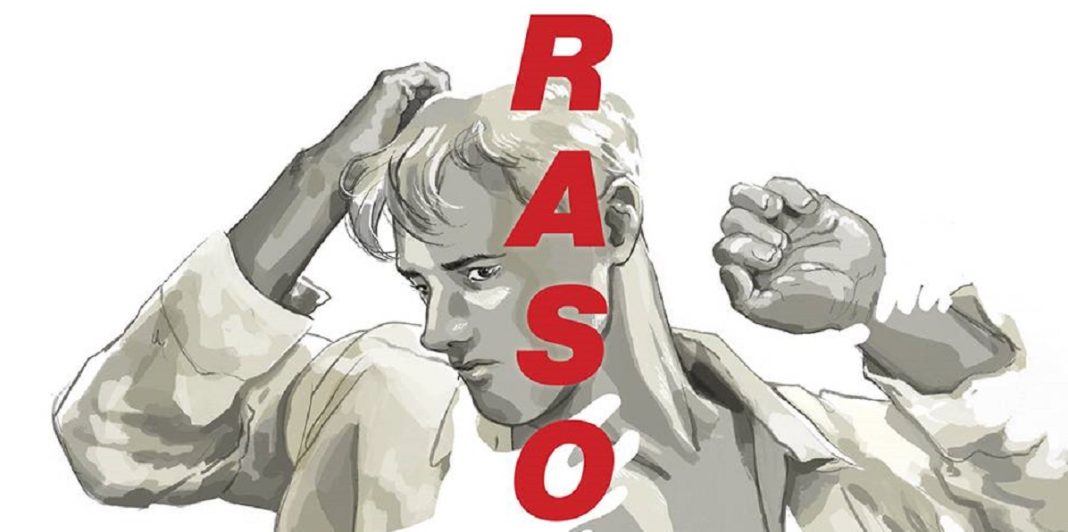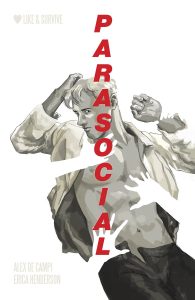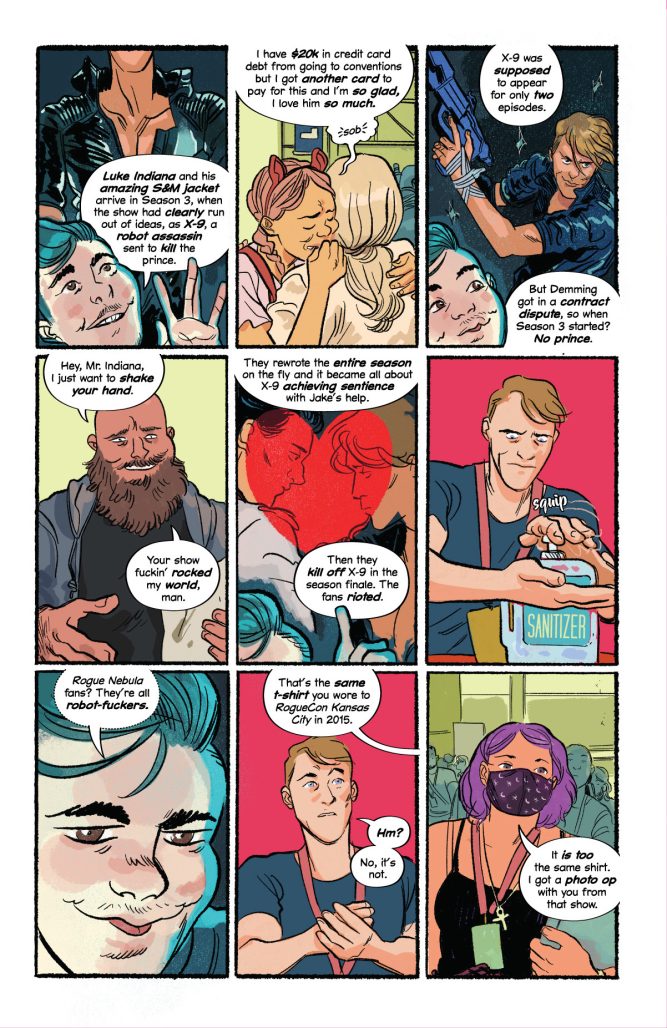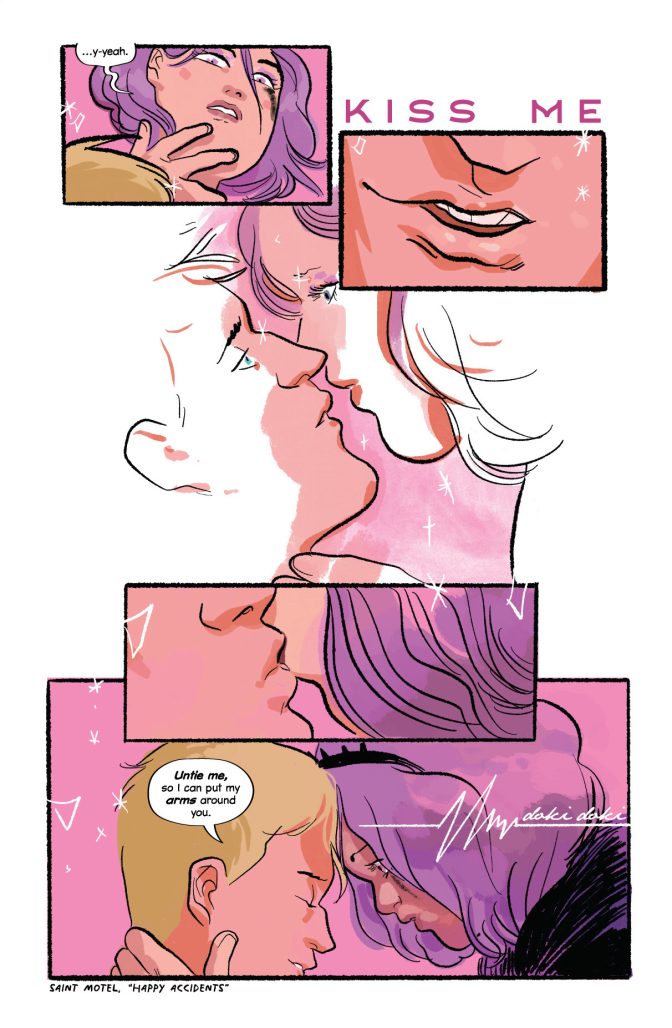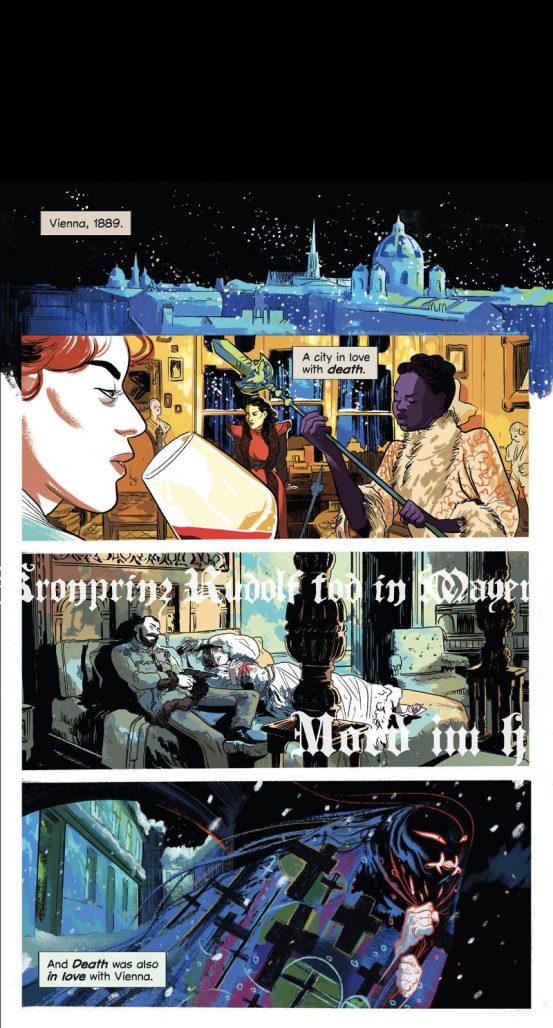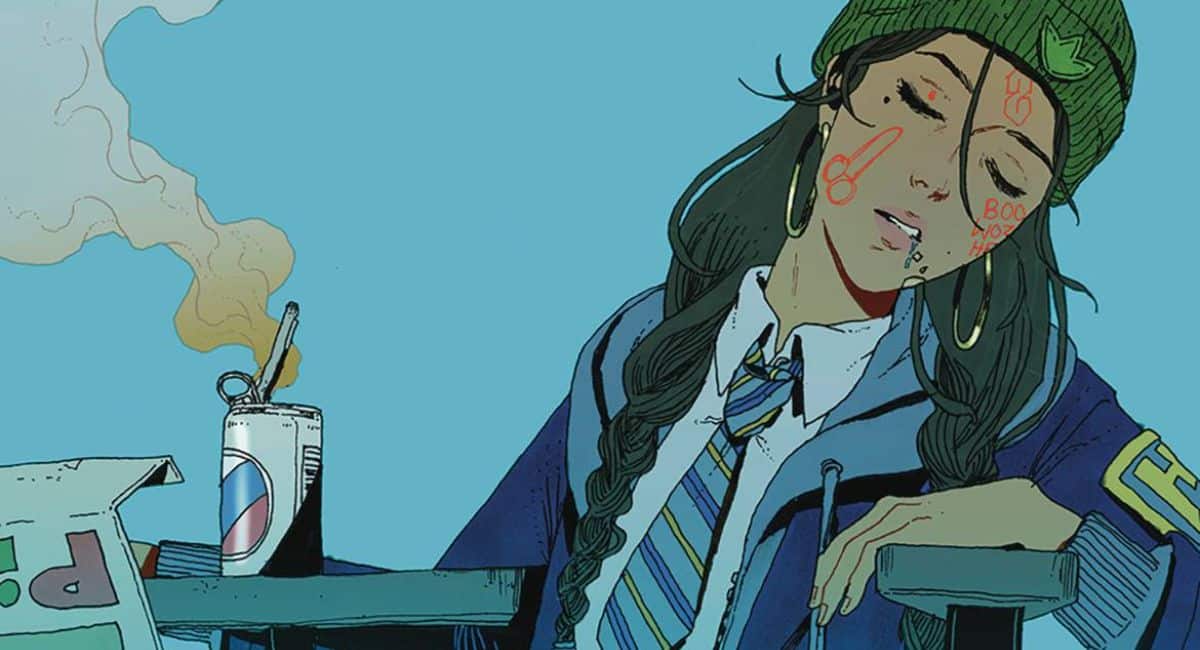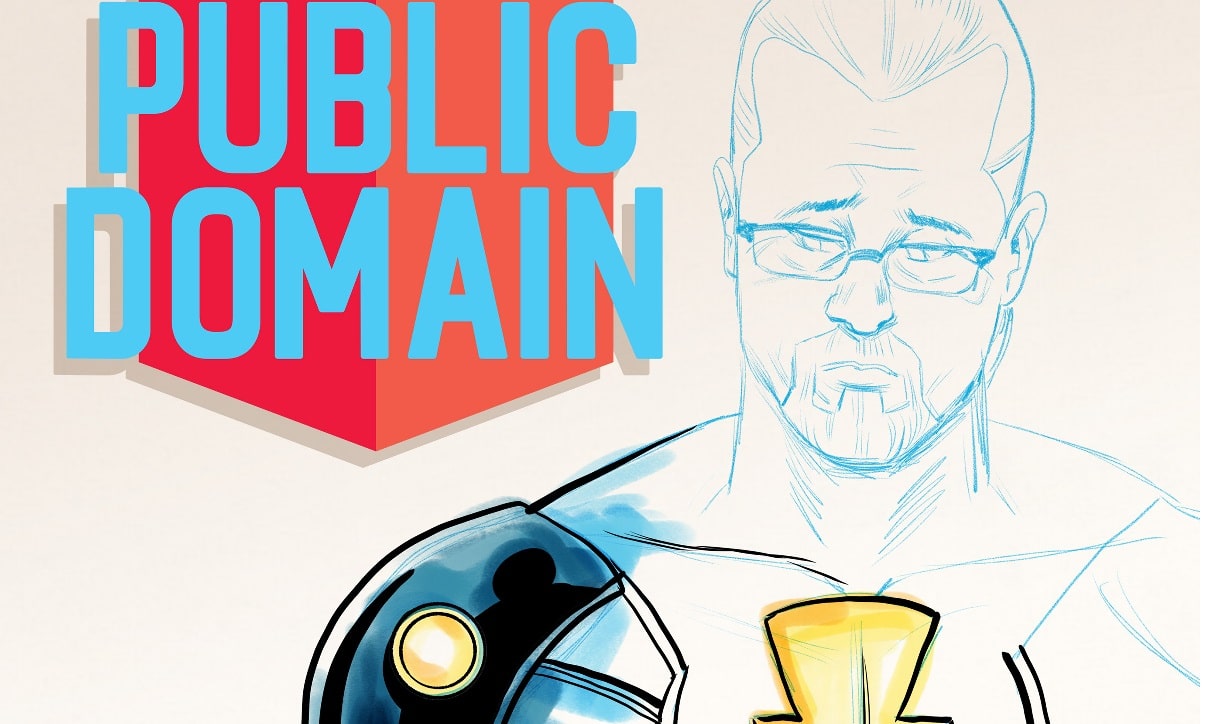 Parasocial
Parasocial
Writer: Alex de Campi
Artist: Erica Henderson
Publisher: Image Comics
Yo, I know Luke Indiana. He’s that guy from that show, you know the one. Oh, you don’t know? Well, check out Parasocial and you’ll know. Or, maybe you’ll come away from it like I did: believing I know Luke Indiana and reflecting on how I perceive my own parasocial relationships.
From the outset, creators Alex de Campi and Erica Henderson use every creative opportunity to challenge our perception of parasocial behavior and self. From an accompanying playlist that punches in from scene bookends to the repetition of appearances that turns Parasocial into The Invisible Man [2020] where we spot the antagonist lurking on repeat viewings, Team PS carefully employs comics’ most deep-seated narrative techniques to effectively marry the theme to a rollicking thrill coaster of modern horror.
For Luke Indiana, this terror trip pops off when he’s scheduled to appear at a Texan comic convention, and after a day of little privacy, his rental gets in a near accident, landing our Luke Indiana in the trap set by an avid stan. What follows is one part Misery and another part violent fujoshi fantasy. Abducted, Luke smarms his way into his kidnapper’s every whim only to deepen her anger with every misstep. Wounded, Luke narrowly escapes with his life and less dignity.
For us reading, Luke Indiana is a bootleg of someone we know, someone who exists at conventions, famous in the past tense, glides on his laurel for it’s the only one he’s got going, and generally takes a sec for the pic instead of a minute to explain why he can’t take one. We know a Luke Indiana. But he’s more than a cut-up collage of Tiger Beat traits; every time Luke appears in a scene is with purpose. Author de Campi bookends Parasocial with IG posts promoting different special guest appearances. By starting our relationship with Luke Indiana on IG, there is an additional layer distancing us from him mirroring how so many parasocial relationships typically start. The next we see of him, he’s haggard even before the con. Our perception of his celebrity flips and suddenly, he’s far more three-dimensional than before.
This precise approach to character appearances levies expectations that de Campi and Henderson constantly use to subvert, obfuscate, and play into. Hell, we don’t even really know who this stalker is until she crashes her way into Luke’s life. But that’s not true either. See, the linecrossing stan was there from the beginning. At the start, we’re in her Luke bias group chat where we see how she communicates to others in-between rewatching a cameo she got from Luke. The next time we see her, she’s masked and less significant in the page layout, but her comments immediately pester and prod Luke like she has rights to his appearance or rather that he owes it to his loyal fans. For a while, this loyal fan is everywhere until she drugs Luke, and takes him home.
Henderson makes sure this stalker is everywhere quite literally, but in doing so is forced to find increasingly innovative ways of using panel size and layout flow to de-emphasize the kidnapper’s increasingly pervasive maneuvers. With bouncy page margins and gutters that fluctuate formula to disorient and directly tying panel count to amount of time presented, Henderson’s pages charm as much as they horrify. In the backmatter, Henderson discusses rendering quality as it directly ties to qualitative states. At the start, Luke and stalker are pristine, polished even. By the end, their lineart is looser, less defined to mimic how such invasion of privacy, such unrelenting abrasive honesty can deteriorate the strongest of poker faces.
Speaking of, a consistent highlight of Henderson’s decision-making is in curating which grotesquely fervent con-goer expression to adorn our stalker’s face. Does she look like she just posted some juicy prose to an InuYasha thread on Gaia Online? Or does she need to look like a Whovian who eggs the Ninth Doctor on to say, “you were fantastic?” Of note are these magnificent punch-in panels Henderson will resort to after keeping the frame wide to establish a shot or block in characters. With no stuffy formalism to confine Luke and his fan’s world, Henderson is free to stylize scenes independent of each other– this facet works in concert with de Campi’s playlist needle drops that pepper the edge at the beginning of the sequence or at the end; usually for heightened dramatic effect.
Crafting every scene as its own interaction and moment in Luke/fan’s fragile, unrefined parasocial relationship allows the defining emotion to drown the color moods with acrylic-like rendering– with Henderson’s increasingly expressionistic strokes beset by faux paint that bleeds over lineart in a graceful manner, Henderson reinforces the dehumanization and helps Luke’s line-stepper disregard his boundaries at every turn. Cool and cold indigo starts as a narrative clue– a hyperlink, a hashtag, a notification– before it dissolves Luke’s last boundary in a shirt-cutting scene where neither we nor Luke know if his assailant’s intent is to assault him further or not.
Of quiet horror is the lethal and detail-attentive approach to lettering in Parasocial. You’d think easy work for mixed case use letters with words emphasized in bold and italicized, but Team PS adjusts balloon shape and size in order to reinforce the scene. Whether it’s a balloon and tail that waver as much as the shakey line-stepping questions a fan could ask or a quiet expletive, the only narrative elements steeped in truth in Parasocial seem to be their word balloons. Instead of fancying up stroke and dropshadow, Team PS prefers using size and font choice to dictate a stab from a heartbeat, a faux-plea for forgiveness vs a real plea for bare minimum, etc. For a book adding needle drop tracks to scenes with a designerly approach, placement and size within Henderson’s panel flow seem more paramount than general vibe and bombast.
By the end, no one truly learns their lesson, even if feigning to do so, which tricks our perception of Parasocial’s moments. For these unreliable, selfish, and passively nasty people, their actions are violent whispers both long to forget, to distance themselves from. Their flaws the curated characteristics to render them three-dimensional, de Campi and Henderson travel every avenue possible to explore Luke and his stalker’s relationship or lack thereof. We get to know Luke Indiana and Lily [the kidnapper], or at least, we feel like we get to know them. These characters only exist in fiction, but our perception of them makes them feel real in all the ugliest ways. That wouldn’t happen on our end without the deft hands of de Campi and Henderson telling their story.
Check The Beat’s review section for a new graphic novel review every Friday in 2023!
Parasocial is now available!


